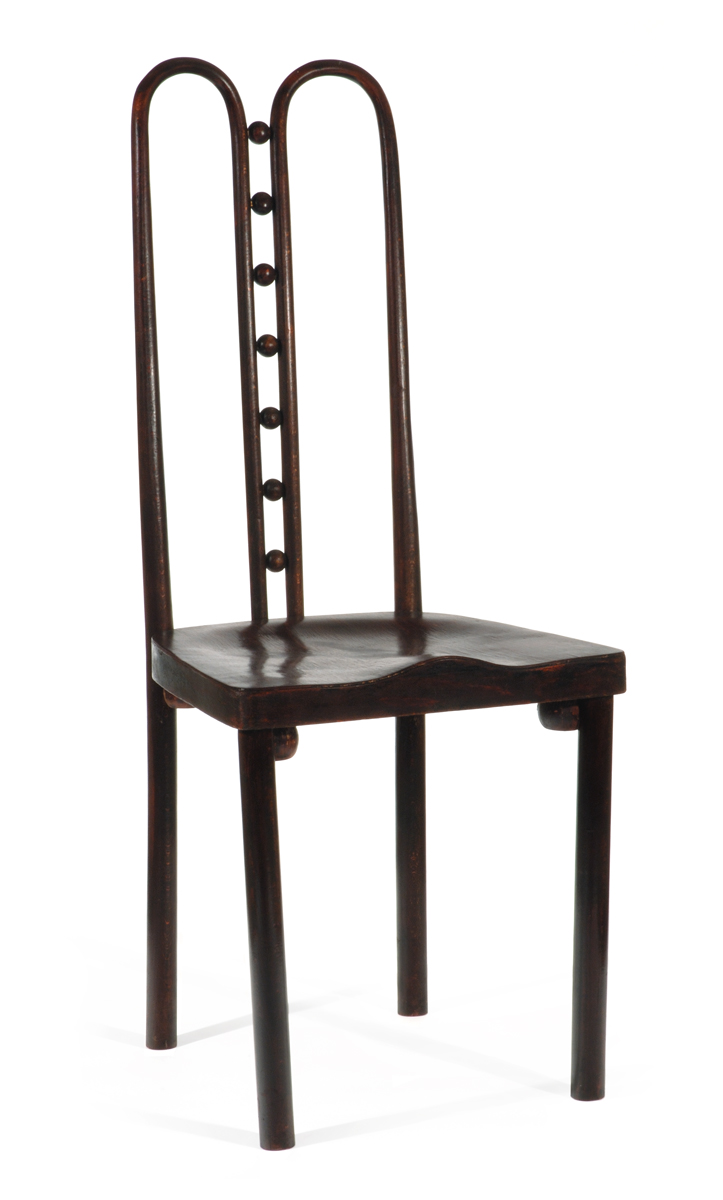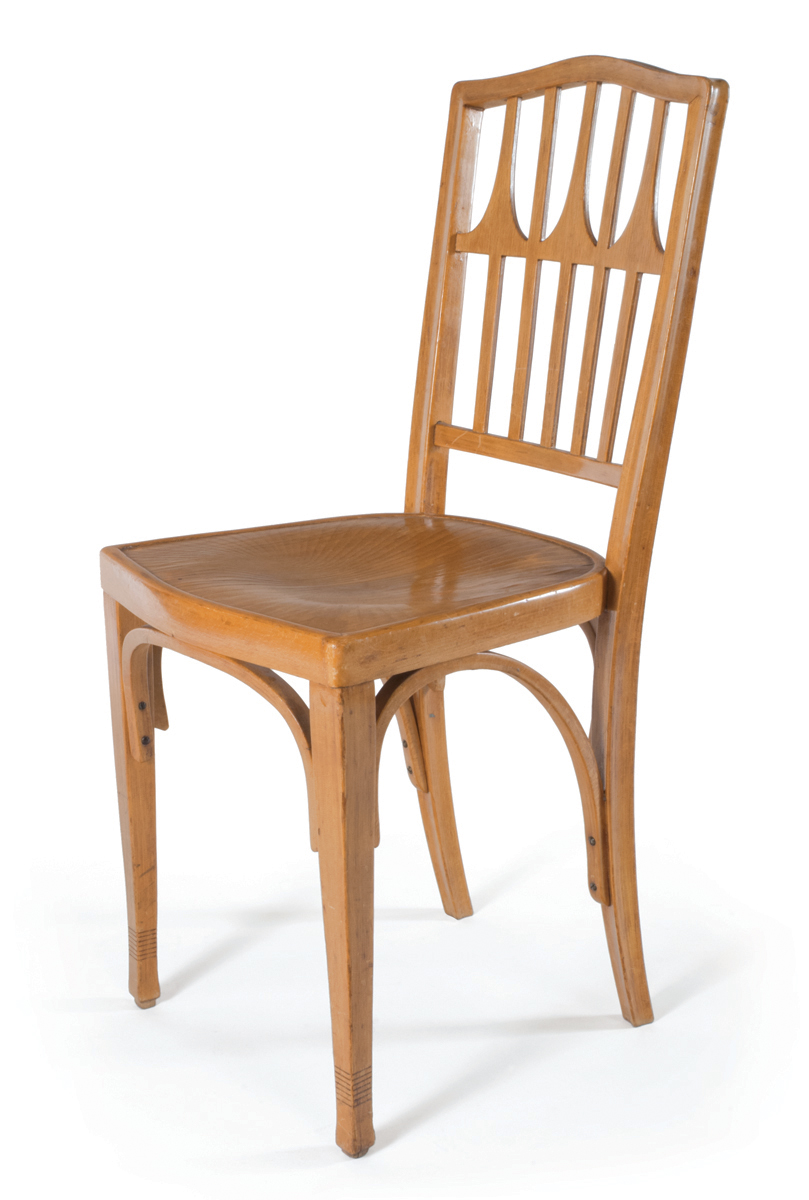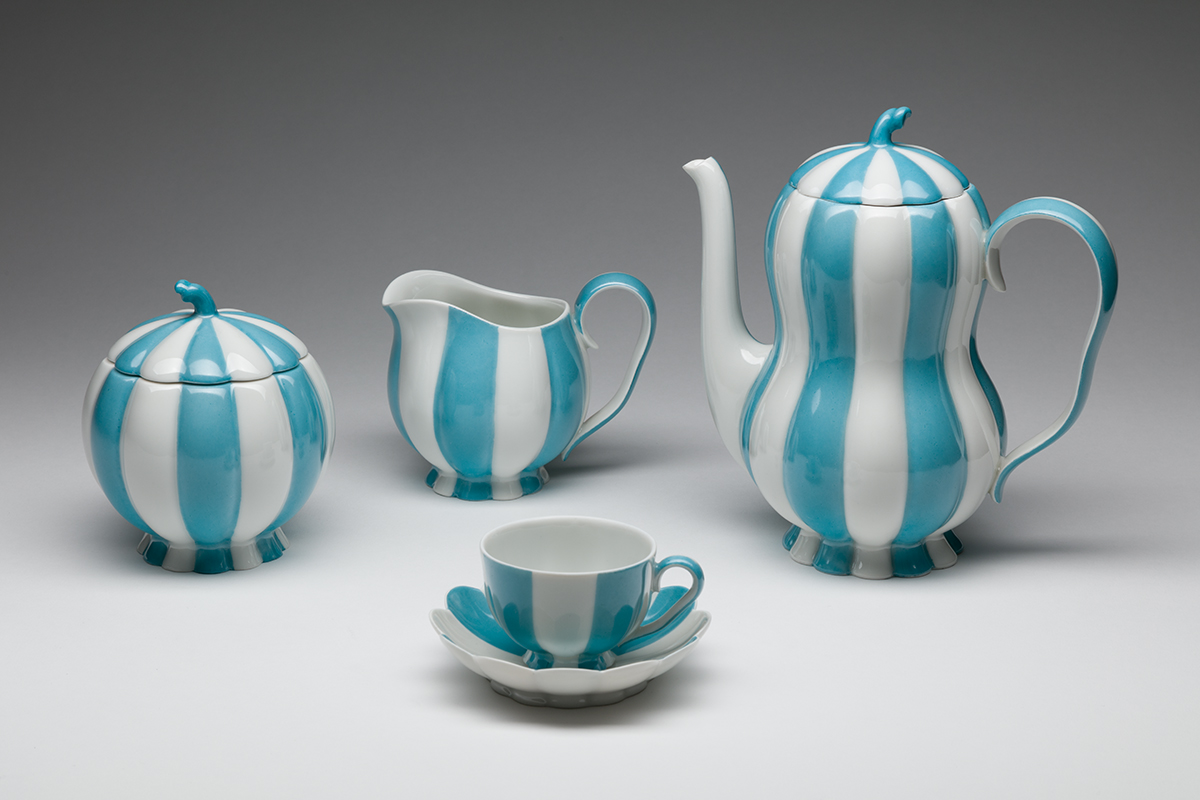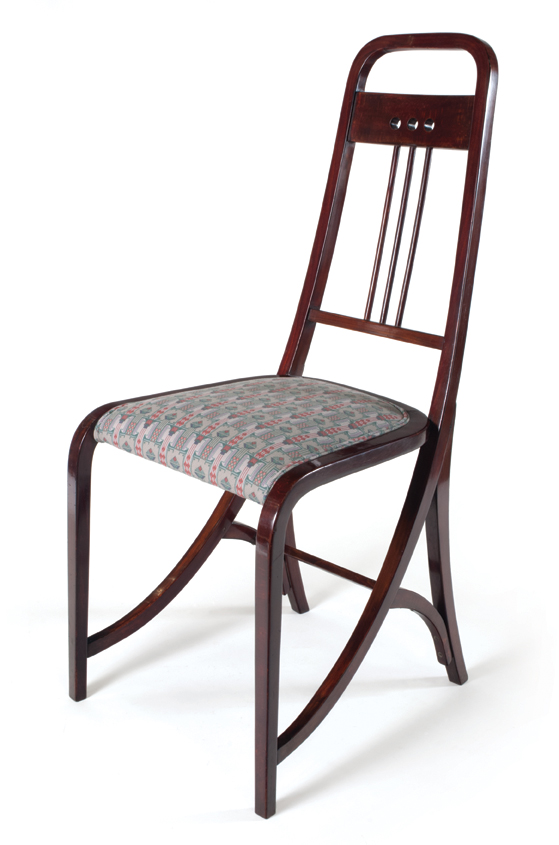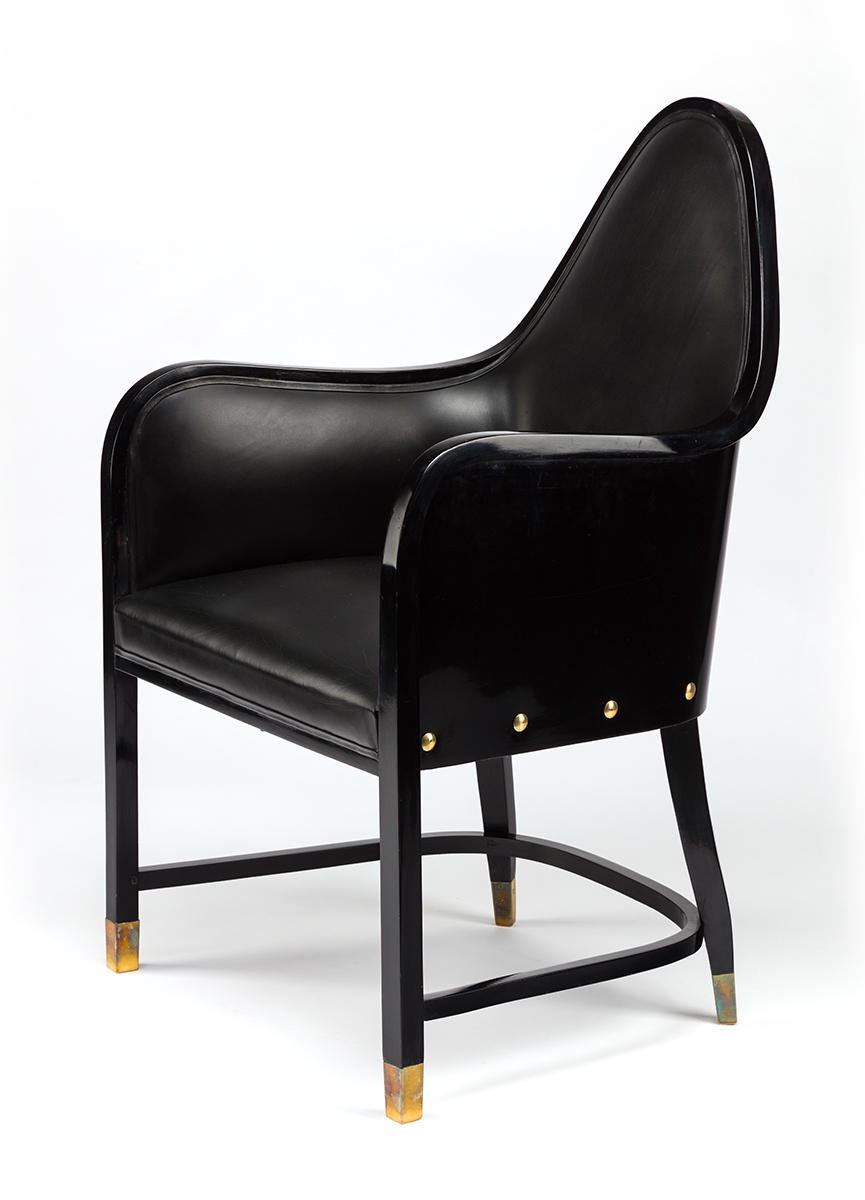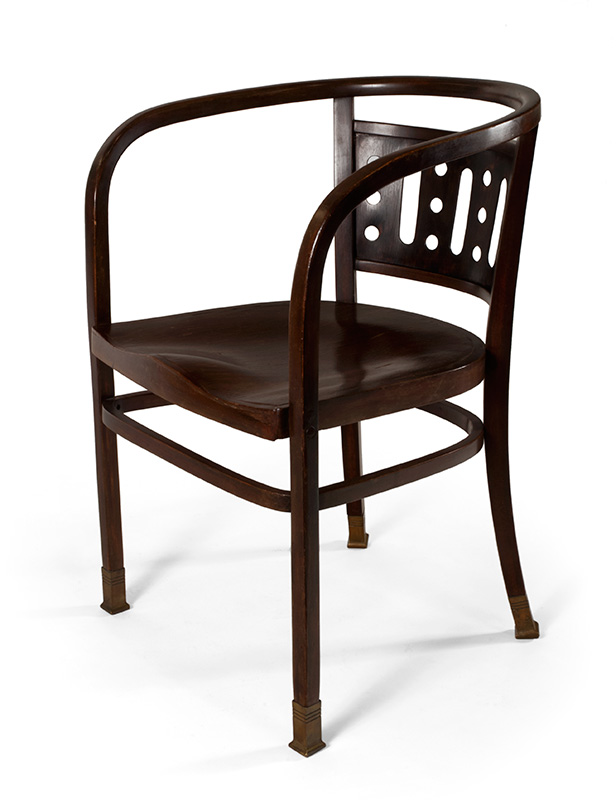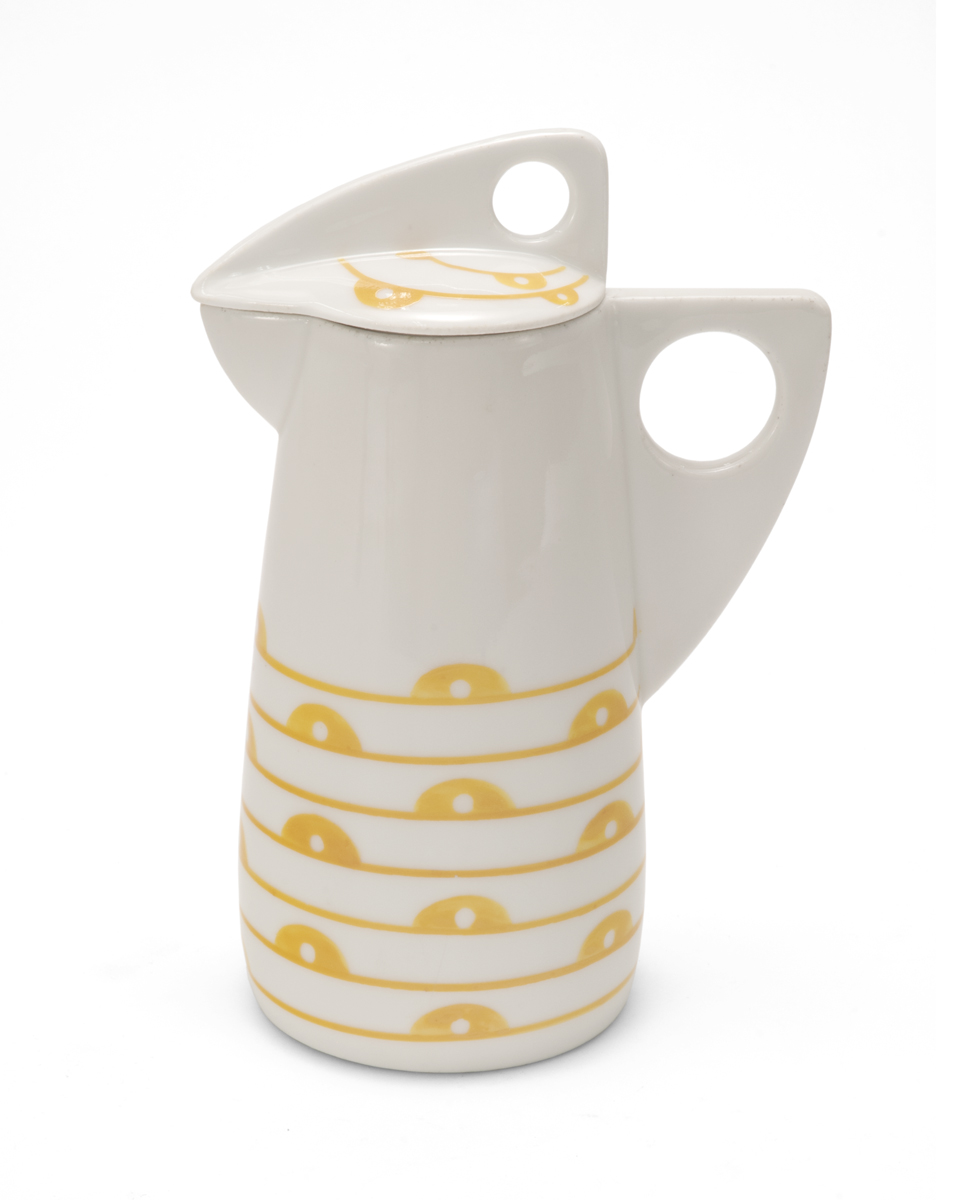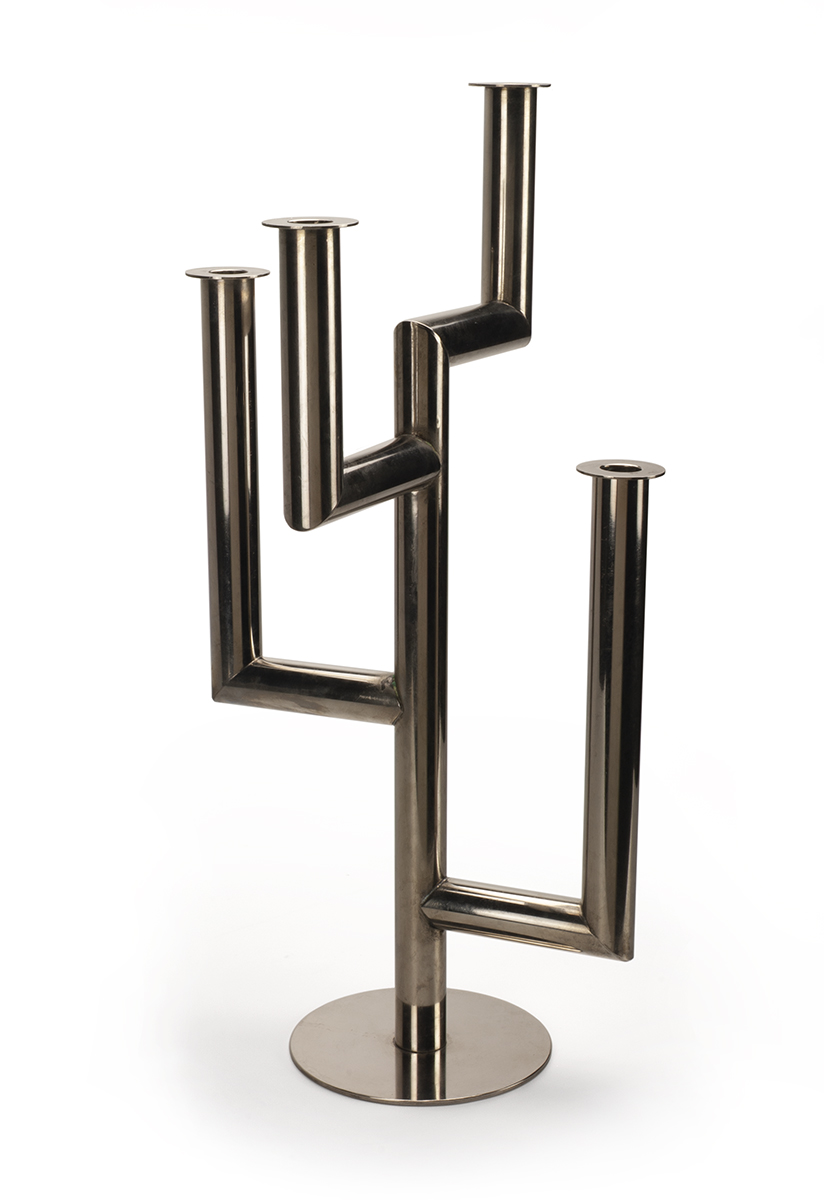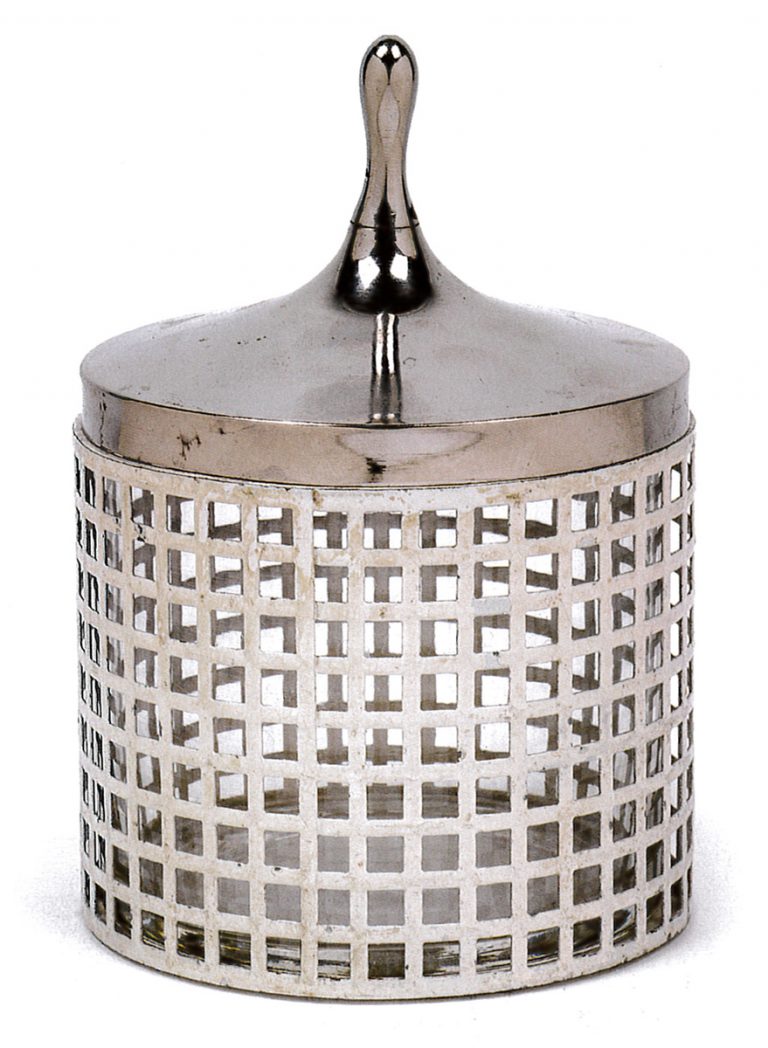
Bonbon Box (No. M0533)
Design Date 1906
Designer Josef Hoffmann (1870–1956, Austrian, b. Moravia)
Manufacturer Christoph Clöter for Wiener Werkstätte, Vienna, Austria
Media enameled zinc, glass and metal
Dimensions 7 x 4 3/4 x 4 3/4 inches
Josef Hoffmann was a member of the Vienna Secession which broke away from the formal Viennese Artists’ Association in 1897. In 1903, along with fellow Vienna Secession member Koloman Moser, Hoffman founded the Wiener Werkstätte (Vienna Workshops). A bonbonnière was typically used for small candies (bonbons). In many countries, but in particular Italy (in Italian bomboniere), the boxes were used as party favors for special occasions such as weddings. Party goers received candy in the small box for attending, and as sugar historically was an expensive food for the upper classes, it was an honor to receive such favors. The perforated grid pattern was common in Wiener Werkstätte metalwork from the idea that the simple square could become a decorative pattern. The grid let the contents of the box show through. If filled with brightly-colored candy, the colors showing through the stark metal grid would have the full decorative effect Hoffmann intended.
ON VIEW in Art Nouveau Gallery 4
Markings Bottom stamped in black with “WIENER WERKSTÄTTE” mark
Credit Line Collection Kirkland Museum of Fine & Decorative Art
Accession Number 2013.0187

